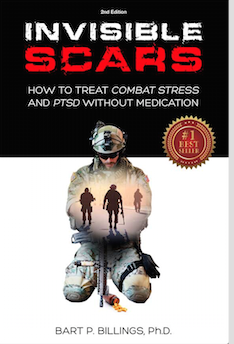Ask The Psychologist Issue #55: What will work in getting the Homeless Off The Streets and the help they need?
- Posted by Bart Billings
- Posted on August 12, 2025
- Ask the Psychologist, Editorials
- Comments Off on Ask The Psychologist Issue #55: What will work in getting the Homeless Off The Streets and the help they need?
When I moved to California in 1969, I worked extensively with the homeless at Mendocino State Hospital and also had an office in Santa Rosa California. Most of the people I saw were from San Francisco and were picked up by the police and transported to Mendocino State Hospital (2 hours north of San Francisco, which made it difficult to walk away from the hospital back into their old neighborhood). Primarily patients that were taken to the hospital had a diagnosis of alcoholism or illegal substance abuse. At that time, these people were called Vagrants — defined as a person without a settled home or regular work, who wanders from place to place and lives by begging. This population now, to be politically correct, are referred to as homeless.In San Francisco during this time period, it was illegal to be a vagrant on the streets, since most of these homeless had physical, mental, emotional or substance abuse problems. The police issued 5250’s or 14 day hold to get the person the help they needed. The determination at that time was that the person was a danger to self or others. Additional holds occurred, once the first 14 day hold expired , if the pa
tient continues to meet criteria for involuntary hospitalization, and the treatment team may then extend the hold. Another 14 day hold may be placed at which time a new hearing would take place.
Many lives were saved by the above mentioned procedure, that I personally observed. What occurred when the person was taken to Mendocino State Hospital was as follows.
1. A diagnosis was made so the person could be placed in an appropriate treatment program.
2. Any and all physical problems were immediately treated.
3. Appropriate food, clothing and living accommodations were provided.
4. Appropriate therapy programs were instituted, with a large variety of treatment modalities from Alcoholic Anonymous type programs, behavior modification, transactional analysis, reality therapy, Native American, etc., etc.. Limited amounts of any brain altering psychiatric drugs were administered since they would cloud a patients judgement. Peer groups worked effectively, if led by a skilled trained therapist (x-patients should not be hired since that would be more or less a paid patient). In order for an ex-patient to be hired, they would have to leave the hospital and get a regular non-mental health job and take college classes in this field.
5. All of the above programs had their own separate building and patients took pride in what program they were living in. This was readily observable when each program would send representatives to the weekly group therapy meeting, to determine who was ready to be referred to the CA Dept. of Rehabilitation (Office and counselors located within hospital, in their own hospital building) for acceptance into their program for vocational training, job placement, on the job training, or education, including college. All of these services, plus more, were totally free and patients worked hard to be accepted.
6 When a patient became a client of DOR, they would make plans to leave the hospital and live in a Half Way House with other patients. There would be group Therapy sessions in the evenings run by county social workers. The living facility was paid for by the patients, since they received a social security disability check each month.
7. I personally did a research project that showed that Therapy and Vocational training, being done simultaneously , was more effective than either alone. This validated itself, when most all patients eventually left the half way house with a job or moved into a college program, where they became independent, living on their own in a private apartment or home. Research at this time demonstrated that psychotherapy, in conjunction with vocational training, was more successful than either one on their own.
WHY THIS PROGRAM ENDED:
When politicians decided that people in mental hospitals had the legal rights to live in the community, even if they were not physically or mentally ready to do so. By closing state run mental hospitals, the states projected they would save much money, which turned out to be a fallacy and inhumane.
The solution to the homeless problem today would be to establish facilities, similar to the state hospitals of the past and provide the funding for the homeless population, which has been described above. There are many vacant abandoned military facilities, that can be remodeled and staffed with people that can provide the above services. It would be best if these facilities are a distance from the city’s that refer patients, so people would find it difficult to drift back into their old homeless community.
Remember, that each state has a Vocational Rehabilitation Agency, mostly funded by the government, to work with the disabled community, as it did in the 1920’s through the 60’s and 70’s when I first started working with this population.
One must not forget that there were many people from WW I living on the streets after the war, when the Smith Fess Act was passed by congress in 1920, that was then called the National Vocational Rehabilitation Act (NVRA), that still exists today with funds for every state, to work with the disabled populations. At one time, the government established that for every $1 spent on this rehabilitation effort, the government got back 8 dollars in taxes from this population.
Laws need to be changed now (Vagrancy laws), to help get the homeless into treatment and vocational programs and State and Federal agencies need to do their jobs, as they were directed to do in the 1920s, since the NVRA gets re-certified on a regular basis and exists today.
Bart P. Billings,Ph.D.
COL SCNG-SC, Military Medical Directorate (Ret.)
Licensed Clinical Psychologist CA PSY 7656
Licensed Marriage, Family Therapist CA LMFT 4888
-Director/Founder International Military & Civilian Combat Stress Conference
-Initial Enlisted Ranks and Retired as Medical Service Corps Officer with a total of 34 years in US Army
-Recipient of the 2014 Human Rights Award from Citizens Commission on Human Rights International & The University Of Scranton “Frank O’Hara Award” in 2016.
bartbillings@yahoo.com
http://bartpbillings.com (“Invisible Scars” & “Unhealthy Eating …” Books Website)
www.combatstress.bizhosting.com (Combat Stress Conference website)
Cell 760 500-5040
Ph 760 438-2788

Some Amazon 5 Star Reviews
Recent Customer Reviews
– This Book Saved My Life. –
I am sure that this book will save lives.
– 25 pages into Invisible Scars, I knew that it was the second most important book I would ever read…after the Bible. — David T. Ossian, Asst. National Vice Commandant ,
Marine Corps League
– This book is life changing…everyone needs to read ….




